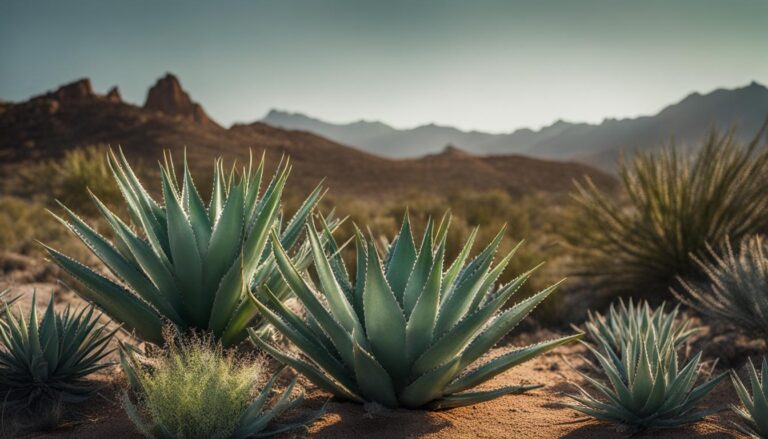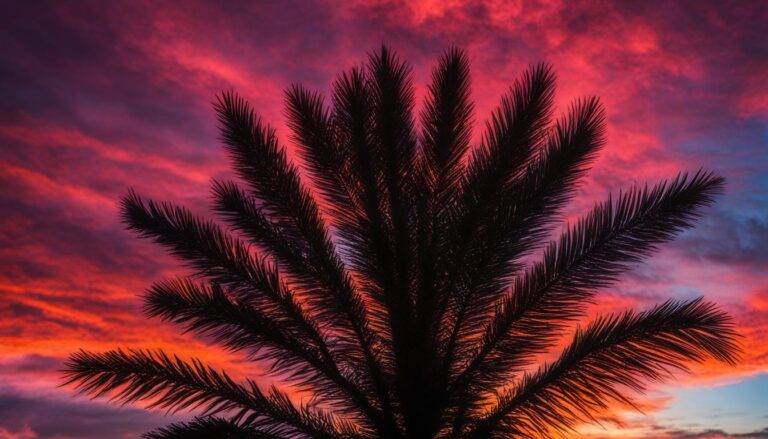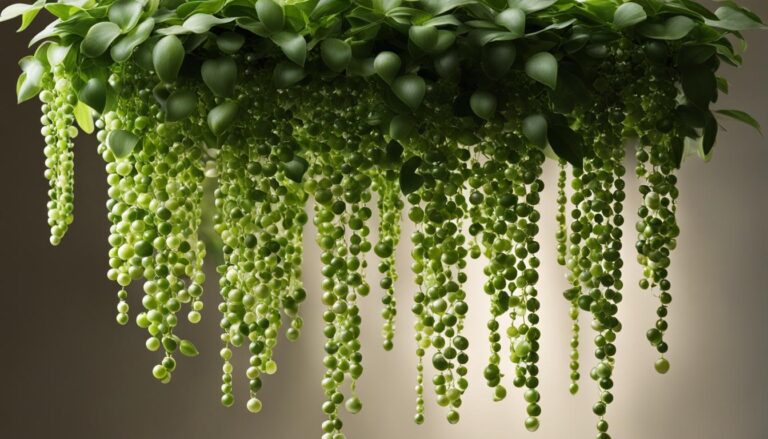
Discover the wonders of the Venus Flytrap (Dionaea muscipula), a captivating and carnivorous plant that has intrigued gardeners and botanists for centuries.
In this article, I will delve into the unique mechanisms and intriguing biology of this fascinating insect-eating plant. Join me as we uncover the secrets of the Venus Flytrap and explore its botanical curiosity.
Native to North American swamplands, the Venus Flytrap has evolved to capture and digest prey using a series of physiological changes triggered by its specialized trapping mechanism.
When a prey enters its trap, the Venus Flytrap secretes digestive enzymes, breaking down the prey’s soft tissues into a nutrient-rich slurry. This digestion process can take several days to a couple of weeks, depending on various factors.
Understanding the digestion process and ensuring proper care is crucial to maintain the health of this remarkable carnivorous plant.
Keep reading to learn more about the energy dynamics of the Venus Flytrap’s traps, fertilizing dos and don’ts, and how to apply fertilizer to meet the plant’s unique nutrient requirements. Let’s unlock the secrets of this botanical wonder together!
The Energy Dynamics of Venus Flytrap’s Traps
Researchers have conducted studies to understand the energy dynamics of Venus Flytrap’s traps and how they meet their high energy needs during trap closure and digestion. One study published in the Annals of Botany by Daniel Maurer and colleagues aimed to determine the processes behind the additional energy required for trap closure and digestion.
The researchers found that the traps undergo a shift from linear to cyclic electron transport during the early phase of digestion to produce the necessary energy for energy homeostasis.
By four hours after capture, the energy derived from the digestion of the prey starts to power further prey processing. Within a day, this acquired energy is exported to other organs within the plant, leading to a drop in the traps’ ATP content.
The research sheds light on the intricate energy dynamics at play in the Venus Flytrap’s traps and the plant’s adaptive mechanisms to meet increased energy demands during prey capture and digestion.
By understanding the energy pathways and processes involved, scientists can gain further insights into the unique biology of this carnivorous plant.
The Energy Dynamics at a Glance
To summarize the energy dynamics of Venus Flytrap’s traps:
- During the early phase of digestion, the traps shift from linear to cyclic electron transport.
- By four hours after capture, energy derived from prey digestion powers further prey processing.
- Within a day, the acquired energy is exported to other organs within the plant.
- This export leads to a drop in the traps’ ATP content.
The energy dynamics of Venus Flytrap’s traps highlight the plant’s remarkable ability to adapt and optimize its energy usage in response to capturing and digesting prey. By unraveling these mechanisms, researchers are uncovering the secrets behind the plant’s captivating nature and its ability to thrive in nutrient-poor environments.
| Phase | Energy Dynamics |
|---|---|
| Early phase of digestion | Shift from linear to cyclic electron transport |
| Four hours after capture | Energy derived from prey digestion powers further prey processing |
| Within a day | Acquired energy is exported to other organs within the plant |
| Drop in the traps’ ATP content |
Fertilizing a Venus Flytrap: Dos and Don’ts
Fertilizing a Venus Flytrap requires special considerations to provide the necessary nutrients without causing harm. Venus Flytraps, scientifically known as Dionaea muscipula, are carnivorous plants adapted to low levels of nutrients in their environment. To ensure their health, it’s crucial to follow the dos and don’ts of fertilizing these unique botanical curiosities.
Dos
- Use a fertilizer specifically designed for carnivorous plants, often labeled as “Carnivorous Plant Fertilizer.” This specialized fertilizer provides a low-level, slow-release of nutrients that mimics the plant’s natural habitat.
- Consider the availability of prey in the plant’s environment. If the Venus Flytrap is not receiving sufficient prey, it may require fertilization to supplement its nutrient intake.
- Dilute liquid fertilizers, such as one teaspoon per gallon of water, and apply every two to three weeks during the active growing season. This helps provide a consistent supply of nutrients without overwhelming the plant.
- Monitor the plant’s response to fertilization. If the Venus Flytrap shows signs of improved growth and vigor, you can continue with the recommended fertilization routine.
Don’ts
- Avoid over-fertilization, as excessive nutrients can harm the Venus Flytrap. Stick to the recommended dilution and frequency to prevent nutrient imbalance and potential damage to the plant.
- Do not use general-purpose fertilizers or those high in nitrogen, as they can disrupt the delicate nutrient balance of the Venus Flytrap and negatively impact its health.
- Avoid fertilizing during the winter months when the plant is in a dormant phase. Instead, focus on providing the appropriate environmental conditions, such as a cooler and drier resting period.
Following these dos and don’ts of fertilizing a Venus Flytrap ensures that the plant receives the necessary nutrients without compromising its health. By providing the right balance of nutrients, you can support the growth and vitality of these captivating carnivorous plants.
Comparing Fertilizer Options for Venus Flytraps
| Fertilizer Brand | Nutrient Composition | Recommended Application Frequency |
|---|---|---|
| Carnivorous Plant Fertilizer A | Nitrogen: 5%, Phosphorus: 3%, Potassium: 2% | Apply every 2-3 weeks during the active growing season |
| Carnivorous Plant Fertilizer B | Nitrogen: 3%, Phosphorus: 2%, Potassium: 4% | Apply every 2-3 weeks during the active growing season |
| Carnivorous Plant Fertilizer C | Nitrogen: 4%, Phosphorus: 2%, Potassium: 3% | Apply every 2-3 weeks during the active growing season |
When choosing a fertilizer for your Venus Flytrap, consider the nutrient composition and recommended application frequency. These specialized fertilizers are formulated to provide the essential nutrients that are beneficial for the plant’s growth and nutrient balance.
How to Apply Fertilizer to a Venus Flytrap
When it comes to applying fertilizer to a Venus Flytrap (Dionaea muscipula), it’s important to proceed with caution to avoid any harm to the plant. Liquid fertilizers, such as Miracle-Gro’s Venus Flytrap Plant Food, are highly recommended as they are quickly and evenly absorbed into the soil, providing the necessary nutrients.
First and foremost, it’s crucial to use a fertilizer specifically designed for Venus Flytraps. These specialized fertilizers are formulated to meet the unique nutrient requirements of these carnivorous plants, ensuring their overall health and well-being.
When applying the fertilizer, follow the instructions on the package, typically diluting one teaspoon of the fertilizer in a gallon of water. This diluted fertilizer can then be sprayed onto the leaves of the Venus Flytrap, ensuring complete coverage.
It’s important to note that fertilizing should only be done during the active growing season, which is usually from April to October, and should be avoided during the winter months when the plant is dormant.
Remember, Venus Flytraps have low nutrient requirements, and excessive fertilization can actually be detrimental to their health. By following these proper techniques for applying fertilizer, you can provide the necessary nutrients without any harm, ultimately helping your Venus Flytrap thrive.
FAQ
Can I feed my Venus Flytrap with regular insects?
Yes, Venus Flytraps are designed to capture and digest small insects and arachnids. However, it is important to avoid feeding them with insects that have been exposed to pesticides or other harmful substances.
How often should I water my Venus Flytrap?
Venus Flytraps require moist soil at all times. It is advisable to water them with distilled water or rainwater to avoid the accumulation of minerals from tap water. The frequency of watering depends on the environmental conditions, but generally, keeping the soil damp is sufficient.
How much light does a Venus Flytrap need?
Venus Flytraps thrive in bright, indirect sunlight. They require at least four to six hours of sunlight a day. Placing them near a south-facing window or outdoors in a sunny spot is ideal.
What should I do if my Venus Flytrap turns black?
Darkening or blackening of the trap’s outer surface is a natural part of the digestion process. However, if the entire plant turns black or shows signs of mold or rot, it may be a sign of improper care or a fungal infection. It is best to consult a knowledgeable plant expert for proper diagnosis and treatment.
Can I fertilize my Venus Flytrap with regular plant fertilizer?
No, Venus Flytraps have unique nutritional requirements. Regular plant fertilizers contain high levels of nutrients that can harm the plant. It is essential to use a fertilizer specifically formulated for carnivorous plants, as it provides the necessary nutrients in a safe and appropriate manner.
How do I know if my Venus Flytrap is getting enough nutrients?
A healthy Venus Flytrap will exhibit vigorous growth, produce new leaves, and continue to capture and digest prey. If the plant appears weak, has stunted growth, or fails to capture prey, it may indicate a nutrient deficiency. In such cases, fertilizing with a carnivorous plant fertilizer can help provide the necessary nutrients.






